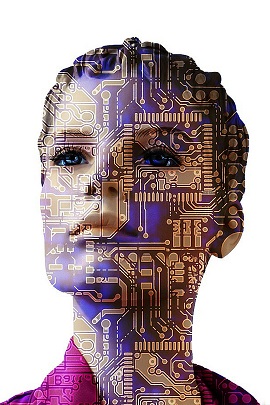
There is general agreement that AI is already having a huge impact on our work and leisure lives, as well as society as a whole – and the effects are escalating rapidly. More open to debate is exactly what to expect and when.
Long-term projections for many economists and robotics designers go only as far as the next five, or maybe 20 years, when driverless cars, elder-case assistants and automated factories will be the norm.
Robin Hanson takes another tack. The associate professor of economics at George Mason University is also a research associate at the Future of Humanity Institute of Oxford University. His multidisciplinary background includes a doctorate in social science from California Institute of Technology, master’s degrees in physics and philosophy from the University of Chicago, and nine years as a research programmer at Lockheed and NASA. 
At a recent MIT IDE seminar, Hanson talked about his new book, The Age of Em: Work, Love and Life when Robots Rule the Earth, saying that the three most disruptive transitions in history were the introduction of humans, farming and industry. If a similar transition lies ahead, he says, “a good guess for its source is artificial intelligence in the form of whole-brain emulations, or “ems,” sometime in the next century.”
In the book, Hanson outlines a baseline scenario set modestly far into a post-em-transition world where he considers computer architecture, energy use, cooling infrastructure, mind speeds, body sizes, security strategies, virtual reality conventions, labor market organization, management focus, job training, career paths, wage competition, identity, retirement, life cycles, reproduction, mating, conversation habits, wealth inequality, city sizes, growth rates, coalition politics, governance, law, and war—in other words, just about everything!
Hanson offered additional insights in a brief Q &A with IDE editor and content manager, Paula Klein, as follows:
Q: For those unfamiliar with your work, please describe your brain emulation hypothesis and the (perhaps, unsettling) post-em-transition society as a whole. Specifically, what will the economic areas of labor, wealth, careers and wages look like? What will be the role of humans?
A: Brain emulations, or “ems”, are one of the standard long-discussed routes by which we might achieve human-level artificial intelligence (AI) in the next century. I take a whole book to carefully analyze what the world looks like, at least for a while, if this is the first kind of cheap human level AI. Quickly, all humans must retire, though collectively, humans are rich and get richer fast. Ems congregate into a few very dense cities, leaving the rest of Earth to humans, at least for a while.
The em population and the em economy grow very fast, and wages fall so low that they barely cover the cost for an em to exist. Ems run at a wide range of speeds, typically, 1,000 times human speed. Most ems are copies of the best few hundred humans, are near a peak productivity middle age, and are short-lived “spurs” that last only a few hours before they end or retire. Ems that continue on longer have a limited useful career of perhaps a subjective century, after which they must retire to a slower speed. The em era may only last a year or two, after which something else may happen, I know not what. But both humans and em retirees will care greatly about what that might be. For more details, I refer you to the book.
Q: Even some very astute AI researchers—including here at MIT—tend to promote humans and machines working together and complementing each other’s strengths and weaknesses. In “the Age of Em” is this a viable option? Are the primary differences in perspective a matter of timing—e.g. your much longer timeframe vs short-term views?
A: If there were only a few humans and a few machines, both might always have jobs, as there could be plenty work for all. But when we can make more machines than we need, then there is the risk that machines could be better than humans at most all jobs, just as autos are now better than horses at most all transport tasks. When machines are very different from humans, then it is more plausible that each type can have many jobs where they are better than the other. After all, we have a huge variety of tasks to do, and traditional machines and software are very different from humans. But because ems are so very similar to humans, they are also very close substitutes. So, if ems are much better at any jobs, they are probably better at most all jobs. And that is in the short term, soon after ems arrive; in the long term, the differences only get bigger.
Q: How do you distinguish your work from sci-fi? One book reviewer described the concept as a “dystopian, hellish cyberworld,” while many others praise your perceptiveness and scientific research. Are your ideas taken seriously by world leaders and governments? How do think we should be preparing?
A: Ems are a possibility long-discussed in science fiction and futurism. I’m not advocating for this world; I’m just trying to describe a likely scenario. Aside from the fact that it has no characters or plot, my book should mainly be distinguished from science fiction by the fact that it makes sense at a detailed level. I’ve spent many years working it out, and draw on expertise in an unusually wide range of disciplines. I hope experts in each field will read it and publicly declare it to be mostly a reasonable application of basic results from their field. At the moment, however, the book is too new for world leaders to be even aware of it, much less take it seriously.
The em revolution won’t happen soon, but when it does appear it could happen within just five years. So rather than wait for clear signs before responding, we should just prepare and wait. For example, we should ensure that we all have assets or insurance to cover our needs in this scenario, be ready to quickly create enough regulatory flexibility to allow fast em development nearby, and consider teaching our children to be willing and ready to emigrate to this new civilization.
